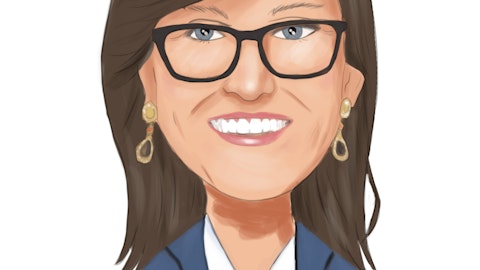Our expectations for growth in Q4 reflect the continued strength of our business and the year-over-year growth rate reflects a tougher comparison to Q4 of last year, which was our highest quarterly growth rate last year and included particularly strong Black Friday, Cyber Monday weekend. Q4 gross margin percentage is expected to be up 300 to 400 basis points over Q4 of last year, with a clear driver being the removal of the dilutive margin impact of our logistics business, which was itself approximately 300 to 400 basis points. Excluding that impact on logistics, Q4 gross margin is expected to be flat year-over-year. Other key factors contributing to our Q4 gross margin expectations are the benefit of the price increase in our standard pricing, which is offset by higher expected payments volume and penetration.
As a reminder, Q4 gross margin historically has declined relative to Q3 due to the higher percentage of revenue coming from payments given the GMV volume from the holiday season. Our guidance implies that our gross margins will increase for calendar year 2023 compared to 2022. We believe that our Q4 operating expense dollars will be down at a low single digit percentage rate compared to our Q3 operating expense dollars of $779 million. Our cost base is stabilizing as we continue to lean into the new shape of Shopify. We continue to demonstrate our ability to operate more efficiently, leveraging automation and process improvements, while continuing to launch new products and invest in key areas. Moving to stock-based compensation. SBC is expected to be approximately $100 million in Q4.
We continue to expect capital expenditures to be approximately $45 million for all of 2023, which includes $33 million that we incurred related to logistics in the first two quarters of the year. Finally, on free cash flow. Our free cash flow margin and our free cash flow dollars have both improved sequentially every quarter this year and this trend is expected to persist into Q4. We anticipate that our Q4 free cash flow margin will be in the high-teens. This continued improvement in our free cash should be viewed as a clear indicator of the steps that we have taken this year to drive towards greater profitability as we build for the long-term. Before I close out the call and as we previously announced, we will be hosting an Investor Day for financial analysts and institutional investors on December 5th in New York.
We will not be providing a long-term detailed financial model at the Investor Day. What you can expect from us is to hear from the key leaders across our business, including Tobi, Harley, Kaz, our COO, Bobby, our Chief Revenue Officer and Glen, our Vice President of Product for Shopify Core. Throughout the event, we plan to discuss the significant market opportunity ahead of us, our multiple durable growth levers, and our approach to product innovation and go-to-market. More information regarding the event can be found on our corporate website, investors.shopify.com. In closing, the top line growth in our business remains very strong. Our focus on operating expenses remains unwavering and our free cash flow generation continues to strengthen.
All these factors clearly showcase the resilience of our business model, our robust market position and our capacity to generate more value for our merchants, which subsequently drives our success. With that, I’ll now turn the call back over to Carrie for your questions.
A – Carrie Gillard: [Operator Instructions] Our first question comes from DJ Hynes at Canaccord.
DJ Hynes: Harley, given the success you’ve seen with the Standard plan price increases, how does that inform your thinking on price optionality in the Plus base as you look to ‘24?
Harley Finkelstein: Hey DJ, thanks for question. Yes. I mean, you said it — we saw, when we increased our Standard price by about a third, we didn’t really see any issue come from merchants. I think the price to value equation of Shopify is still so far on the side of value. And so, one of the other things we think about a lot more recently, certainly than the past, is monetization in general. We’re really thinking about how to monetize which products and when, and we’re doing that across the board, whether it’s when do we monetize Audiences, when do we relook pricing on Shopify Plus or the enterprise offering, but that’s something that we’re taking a really hard look in. And I think the success of the standard price change earlier this year proved to us that we can still — we can incrementally change our pricing in the future without creating any major shift in that price to value ratio.
So when we keep in mind, on the enterprise side, certainly, right now, what we’re seeing is that every enterprise needs something different, someone headless, someone something right out of the box like Plus, others want more of a modular system like commerce components. And right now, no matter what you need from Shopify, we have a product and solution for you and it’s working really, really well. So, we’ll continue to look — relook pricing when it comes to things like enterprise, but, certainly, the basic price change, makes us quite optimistic that there’s still room there for us to change pricing in the future.
Carrie Gillard: Our next question comes from Craig Maurer with Financial Technology Partners.
Craig Maurer: I wanted to ask about your commentary regarding enterprise level, payments penetration. When I think about the competitive dynamic that you’re going into, one, are you largely replacing sort of one solution providers, meaning strictly a payments provider plus perhaps an additional website e-commerce company? And secondly, are there a lot of instances where the processor, the backend processor might stay the same and relationship changes from the merchant to you?



